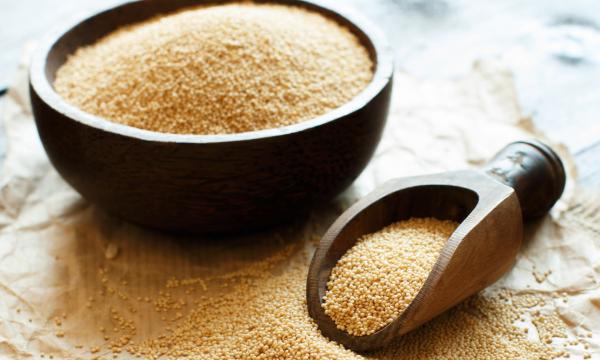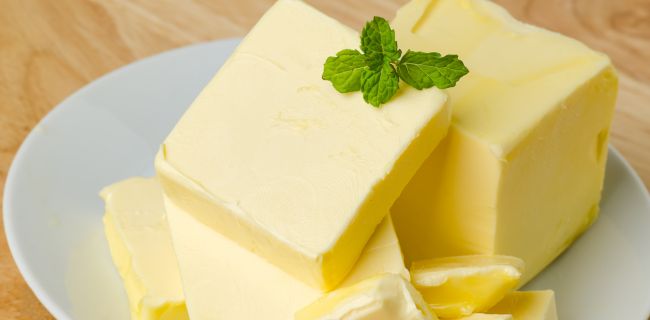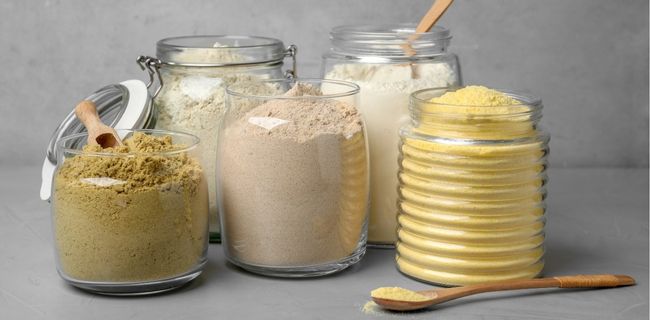10 High Protein Grains to Add to Your Diet Chart
High protein grains are a must for a healthy body. Protein is one of the most important components of a healthy and equally-balanced diet. Protein is one of the three major macronutrients. In particular, the human body uses it for almost everything.
Amino acids are the main foundation of protein. There are 20 different amino acids; however, 11 are regarded as non-essential because the body can produce them. The body cannot synthesize the remaining nine amino acids; hence you can have them through your diet. If you are searching for 10 high-protein grains to add to your diet chart, continue reading this article.
10 High Protein Grains
Let’s see the list of high protein grains.
1. Oats

Oats are one of the most well-known high-protein grains. Oatmeal is frequently made using a variety of different kinds of oats. Steel-cut oats, groats, quick-cooking oats, and other oats are among them. Cooking oats is very convenient.
According to the USDA, one cup of cooked oats has roughly 6 gm of protein. Oats are also high in fiber, complex carbohydrates, magnesium, zinc, and iron. Additionally, because they are inherently low in calories and fat and gluten-free, they are a preferred grain for many different diets and health concerns.
2. Quinoa

Quinoa is a kind of grain; however, it is the seed of a spinach-related plant. It is well known that many societies, even those from long-past civilizations that existed thousands of years ago, depend on it. In addition, it is currently renowned for providing vegans and vegetarians with a great source of protein.
Quinoa bowls are delightful breakfast options with nutrients and plant-based protein, even though the most popular uses for quinoa are in flavorful lunch and dinner recipes. The USDA estimates that quinoa has 8 gm of protein in one cup of cooked quinoa. Additionally, it has a lot of fiber, iron, and magnesium.
3. Kamut

The term “Khorasan wheat” is another name for the historic crop Kamut (Triticum turanicum). Historians believe this grain was also present in earlier civilizations like Mesopotamia and ancient Egypt.
According to the USDA, one cup of cooked Kamut has roughly 10 gm of protein. Additionally, it is a rich source of magnesium, zinc, and fiber.
4. amaranth

Technically, amaranth is not a grain. It’s a pseudocereal, a plant that yields seeds or fruits that you can eat like grains. However, because it has a similar nutritional profile to other grains, amaranth is used as a grain.
Amaranth has 9 gm of protein per cup when cooked, according to the USDA. Additionally, it has a lot of fiber and essential minerals, including magnesium, iron, and zinc. You can use amaranth for substitution, like barley, wheat, and rye, which contain gluten since it is gluten-free.
5. Teff

Teff is a historic grain that originated in ancient Africa, most especially in contemporary Ethiopia. It comes from a plant that produces edible seeds.
Some people prefer teff to gluten-containing or gluten-contaminated foods. According to the USDA, one cup of cooked teff has more than 9 gm of protein. It also contains a lot of iron, fiber, and calcium. It is ideal for a low-fat diet since it has less fat.
6. Farro

Like Kamut and teff, farro is an old grain. You can use it for a variety of cooking methods. For example, you can prepare farro like rice or substitute flour for it while baking using ground farro.
It is a whole grain, but due to its high fiber, complex carbohydrate, and protein content, it is hearty and satisfying. According to the USDA, one cup of cooked farro has 5g of protein. The nine necessary amino acids are not all present in farro, although it is a very significant source of protein.
7. Couscous

Couscous is a grain product made of little steamed balls of mashed durum wheat semolina. It is commonly known as a pasta product or grain since it comes from the same wheat variety as many other pasta products.
The USDA estimates that a cooked whole wheat couscous half a cup in size has almost 5g of protein. Compared to other whole grains, couscous has less fiber, yet it is a fantastic source of complex carbs that can give you a long-lasting energy source.
8. Buckwheat

Buckwheat is not a kind of wheat at all, despite having the term “wheat” in its name. So even though it is considered one, it isn’t even a grain.
While related to sorrel and rhubarb, buckwheat is neither a vegetable nor a herb. Instead, it is a pseudocereal since it is grown for its seeds. According to the USDA, 5 gm of protein is in one cup of cooked buckwheat. While low in fat and sugar, it is also high in fiber. One benefit of buckwheat is that it is gentle on the digestive system, which may benefit people who suffer from irritable bowel syndrome.
9. Brown Rice

The most popular high-protein grain is brown rice. It is hearty, tasty, and healthy. In addition to being a versatile grain, you can prepare brown rice in various ways. The fact that brown rice is a complete grain and is typically inexpensive and plentiful is an advantage.
Brown rice has 4.5g of protein per cup when we cook it, according to the USDA. It is naturally low in fat and has zero cholesterol. Brown rice is a fantastic source of nutrients such as magnesium and zinc.
10. Wheat Berries

Wheat berries are the complete wheat kernel, including the endosperm, germ, and bran. You can ground the grain into flour or used in cooking like other grains. Because of their solid structure and nutty flavor, you can use wheat berries in soups, casseroles, savory meals, and sweet breakfast foods.
The USDA estimates that roughly a full cup of red-dried winter wheat berries has around 150 calories, 6 gm of protein, 0.5 gm of fat, 32 gm of carbohydrates, and 6 gm of fiber.
Conclusion
These are some typical high protein gains. Hopefully, after reading this article, you will learn about these high protein gains and how to include them in your diet.






